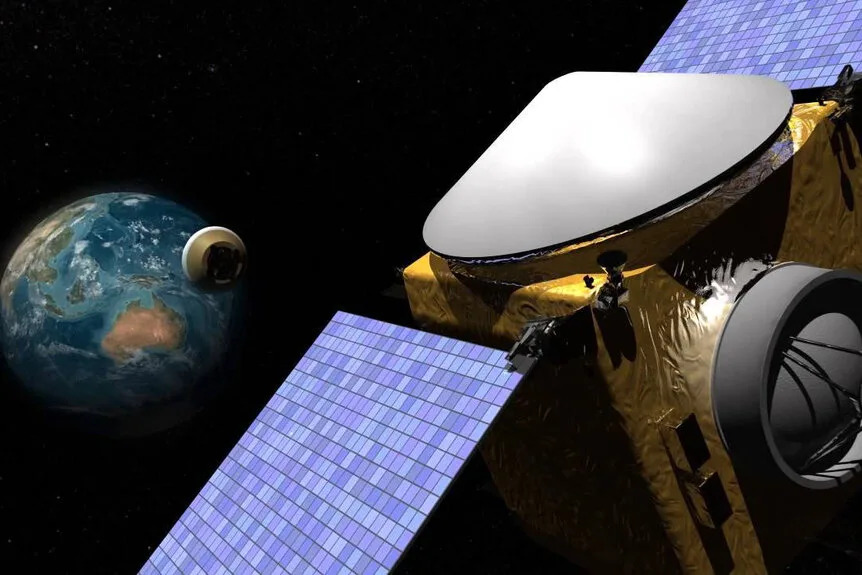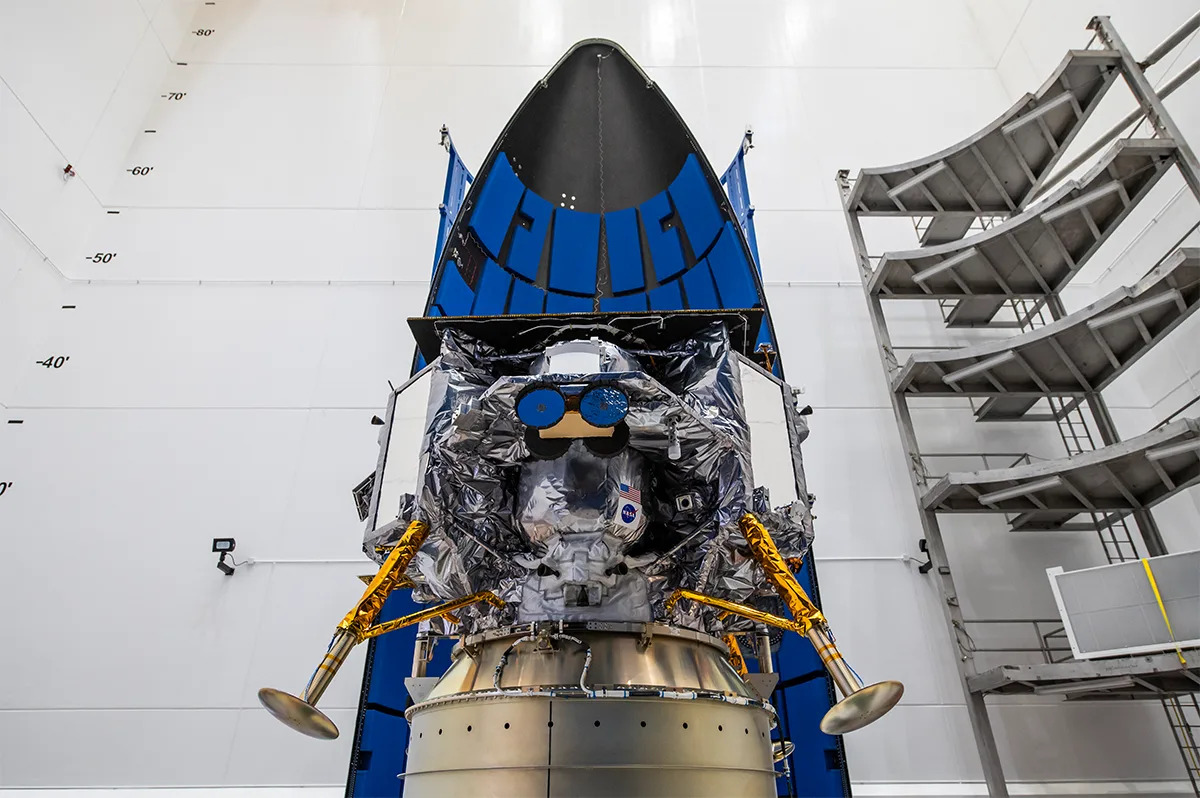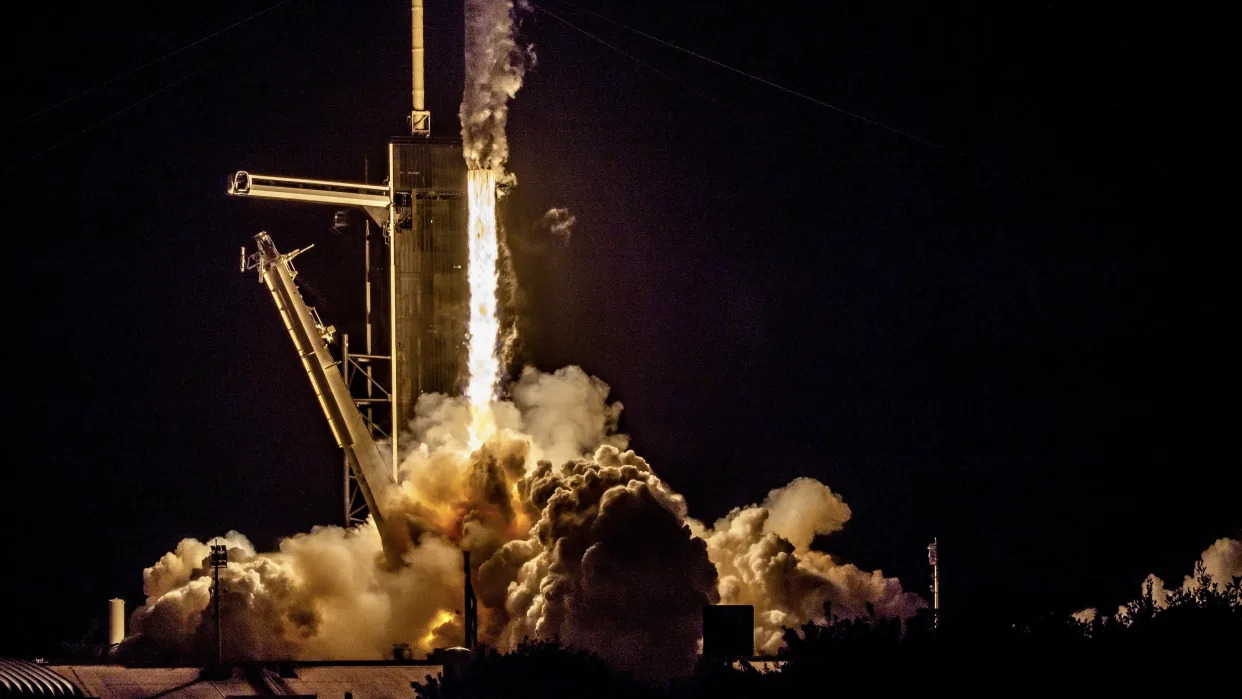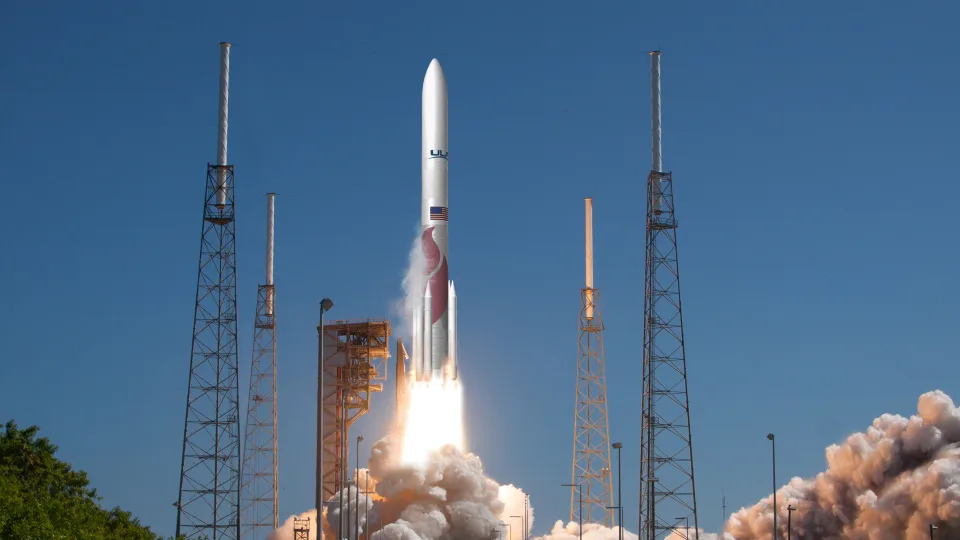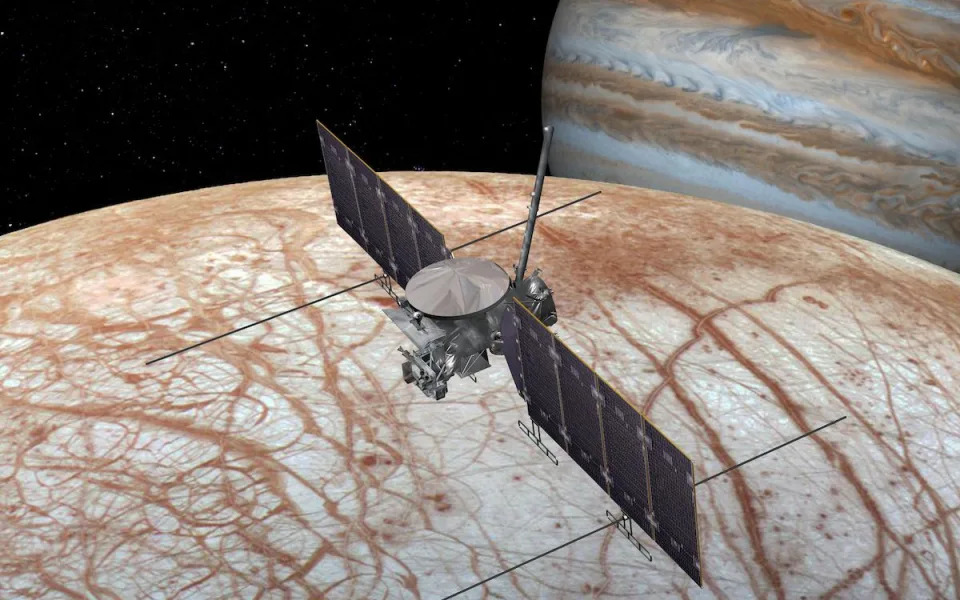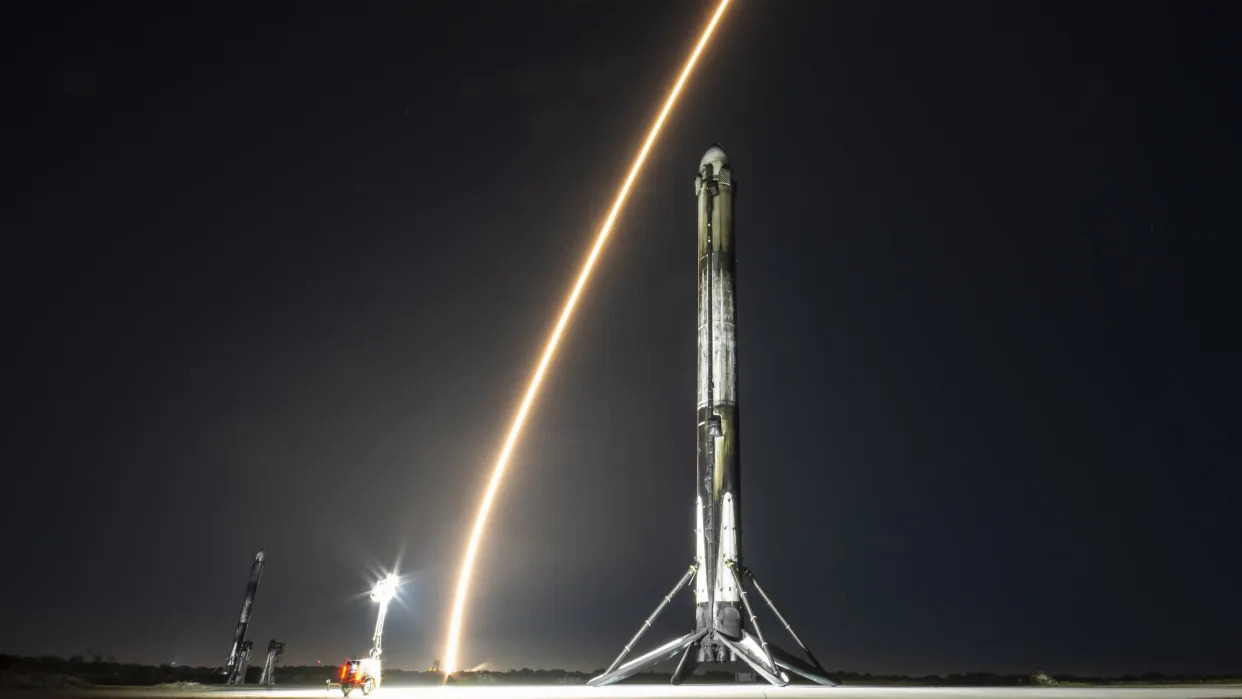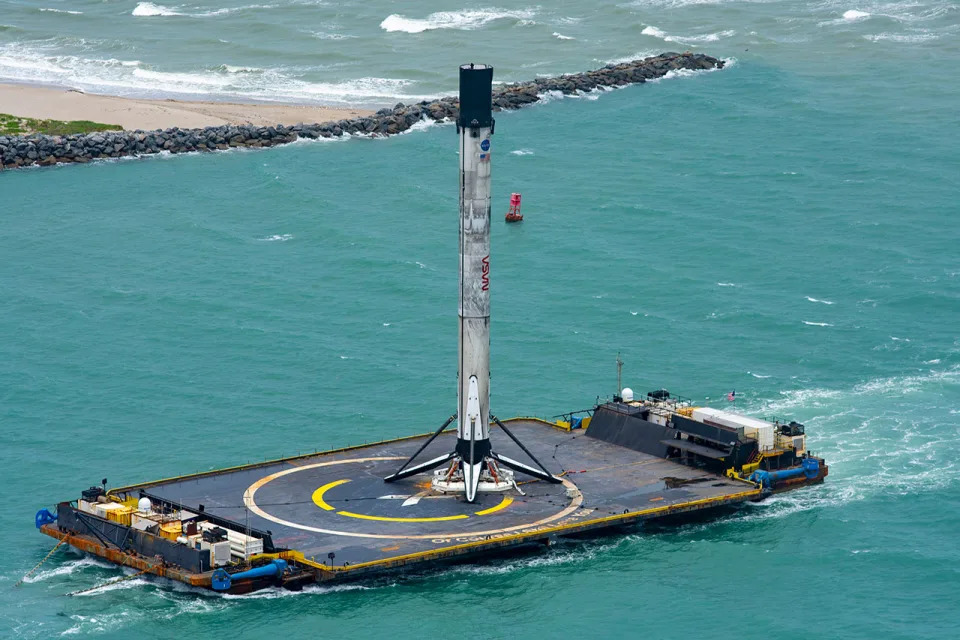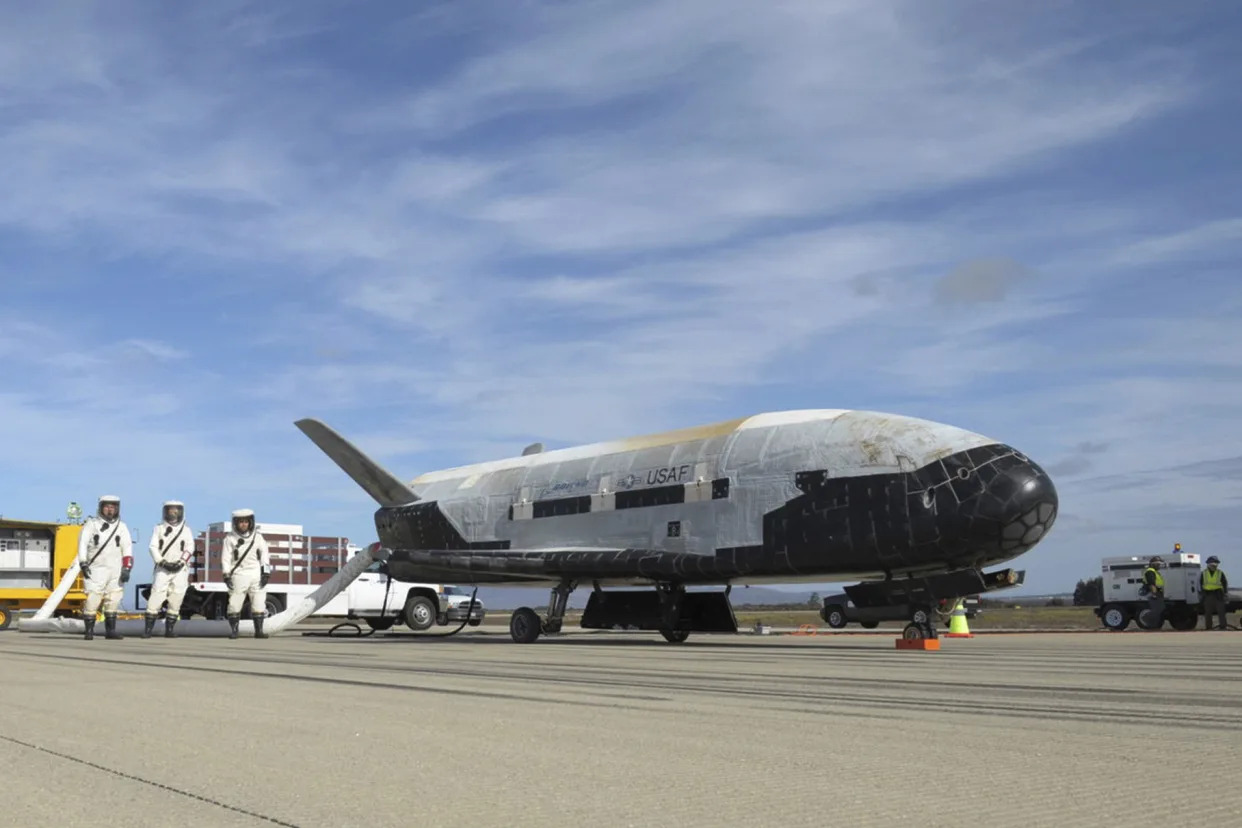Claire Thornton, USA TODAY
Updated Wed, December 27, 2023
New data estimates the greatest number of lesbian, gay, bisexual and transgender U.S. adults live in the South, confirming findings from recent years.
Across the country, researchers estimate more than 5% of U.S. adults are LGBTQ+, matching prior LGBTQ+ population data. Young people ages 18-24 are much more likely to identify as LGBTQ+, according to the report from the Williams Institute at the University of California Los Angeles.
The report, based on Centers for Disease Control and Prevention data, found that in 2020 and 2021, there were nearly 14 million LGBTQ+ adults in the U.S. − with some states having noticeably higher percentages of gay and queer residents than others.
Earlier this year, a poll from Gallup found a slightly higher percentage of U.S. adults are LGBTQ+. Overall, multiple polls show that the adult LGBTQ population has been steadily increasing for years.
"Look at the numbers, more people are coming out younger and people are coming out in places where LGBTQ folks have been less out and visible," Cathy Renna, a spokesperson for the National LGBTQ Task Force, told USA TODAY.
Broken down by state, the report shows Washington, D.C., Oregon and Delaware top the list for greatest percentage of gay and queer residents.
The census, the nation's most well-known population survey, does not gather data on Americans' sexuality or gender identity. In 2021, other, smaller surveys from the bureau began asking those questions of respondents for the first time.
How many people in the US are LGBTQ?
Researchers at the Williams Institute, a leading national LGBTQ+ population data research group, estimate more than 13.9 million LGBTQ+ adults live in the U.S., representing 5.5% of the population.
Every year, Gallup also releases results of a poll estimating how many Americans are lesbian, gay, bisexual or transgender.
Gallup's last report, which polled a nationally representative group of 10,000 respondents, found 7.2% identified as LGBTQ+. The number was highest among adult Gen Zers, or people born between 1997 and 2012, according to Pew Research Center.
South continues to have highest percentage of LGBTQ+ people
The new data shows nearly 36% of the nation's adult LGBTQ+ population lives in the South, representing more than 5 million people. The number is also an increase from the last data released by the Williams Institute in 2014, showing 35% of the nation's LGBTQ+ population lived in the South.
Researchers defined the South as states spanning from Texas and Oklahoma, to Florida and north through Delaware. Kentucky, West Virginia and Washington, D.C., are included in the grouping.
In recent years, Southern Republican-led states passed more laws restricting transgender health care, access to school sports and instruction on LGBTQ+ history than any other part of the country.
For that reason, the South is at the forefront of the national fight for LGBTQ+ rights and equality, Renna said.
"Despite the backlash and despite challenges we're facing, we're resilient and we're not going anywhere," Renna said.
Speaking from New Orleans, which the National LGBTQ Task Force selected for its next annual conference, Renna said the South is where there's the most at stake for people's lives because it's home to the most people living under the most oppressive laws.
"This is where a lot of the work really needs to happen," she said, adding that her organization chose to host its conference in Louisiana because "there are so many LGBTQ people here that are underrepresented in media, culture and frankly in the movement."
Researchers found that 5.7% of Louisiana's adult population is LGBTQ+, ranking slightly higher than states like New York, California and Illinois.
In 2021, another LGBTQ+ advocacy group, GLAAD, analyzed Southern media coverage of LGBTQ+ communities and found that dozens of outlets published few or zero substantive stories on LGBTQ+ issues, including HIV/AIDS, during the 18-month period ending in December 2020.

The Rainbow PAC of Northwest Louisiana hosted a protest against Louisiana bills HB466, HB81, and HB648 for the LGBTQ+ community in front of the courthouse in downtown Shreveport on May, 20, 2023.
Gen Z most likely to be LGBTQ+
Generation Z, the youngest American generation to include adults, has a much higher percentage of LGBTQ+ members than older generations.
Researchers found that in 2020 and 2021, 15.2% of Gen Z identified as LGBTQ+, representing more than 4.6 million people.
Earlier this year, Gallup found 19.7% of Gen Z − or nearly 1 in 5 − said they were LGBTQ+ in 2022.
"It's certainly not uncommon for younger people to say they're lesbian, gay, bisexual, transgender or however else they would identify themselves," said Jeff Jones, a researcher at Gallup who has been tracking LGBTQ+ population data since 2012.
With each passing year, as more Gen Zers enter adulthood, the cohort's LGBTQ+ members also push the entire adult national total higher, Jones said.
"As more come into adulthood, replacing the older people, the overall number should go up," he said.
Bisexuals make up majority of LGBTQ+ population
Researchers have long found that bisexual people − people who are attracted to more than one gender − make up more than half of America's LGBTQ+ population.
Researchers at the Williams Institute did not break down data based on sexuality, instead focusing on state-by-state LGBTQ+ populations.
The most recent data from Gallup found more than 58% of all adult LGBTQ+ people in the U.S. are bisexual.
Researchers in 2019 found that compared with gays and lesbians, bisexuals are far less likely to be out about their sexuality with people they're close to. Some public health professors who study sexuality say biphobia could be playing a role.
What states have the most LGBTQ+ people?
This month's new data from the Williams Institute is the latest batch from the group to rank the states that have the greatest percentage of LGBTQ+ residents.
As in recent years, Washington, D.C., takes the top spot, with 14.3% of adults identifying with the acronym.
Here are the other top states, and the percentage of adult residents who said they're LGBTQ+:
Washington, D.C. − 14.3%
Oregon − 7.8%
Delaware − 7.5%
Vermont − 7.4%
New Hampshire − 7.2%
Washington − 6.9%
Colorado − 6.8%
Maine − 6.8%
Nevada − 6.6%
Massachusetts − 6.5%
This article originally appeared on USA TODAY: Adult LGBTQ population by state
Christianity Is Complex to LGBTQ+ People–But These Facts Are Certain
Ryan Adamczeski
Thu, December 28, 202

LGBTQ+ Baptist Pastor
Christianity is a complicated topic among LGBTQ+ people, but there are still groups in the community that embrace their faith — sometimes to the detriment of their health, and sometimes to their benefit.
Nearly two-thirds of LGBTQ+ people who were raised Christian no longer identify with the religion, according to a new study from Utah State University and the Williams Institute at the University of California Los Angeles School of Law. Among those who remain, adults report more internalized homophobia and transphobia.
Those who are older, Black, cisgender men, and/or live in the South were more likely to continue to identify as Christian as adults, the report found. Among those who stayed Christian, more reported having a history of conversion therapy than those who left or who were never part of the religion.
Those who were never raised Christian reported coming out to family and friends at younger ages than those who were, and those who left Christianity were more likely to report being bullied in childhood than those who stayed Christian.
While the experiences of LGBTQ+ people who have identified as Christian at some point in their lives differed from those who have not, the groups did not differ in health indicators, including stress and well-being. Both groups were out to family and friends at similar rates, and both reported a "sense of connectedness" to the LGBTQ+ community, including in levels of social support.
However, there were some groups who notably benefited from their Christian faith, as well as some who did not. Black LGBTQ+ people were more likely than their White counterparts to be raised Christian, and less likely to leave Christianity. Out of the 87 percent of Black LGBTQ+ people who were raised Christian, 54 percent stayed Christian.
“Some LGBTQ people, for example, Black LGBTQ people, maintain their connection to Christianity despite minority stressors because the social, cultural, and religious support outweighs the negative experiences,” co-author Ilan Meyer, Distinguished Senior Scholar of Public Policy at the Williams Institute, said in a statement.
“For other LGBTQ people, the heightened experience of minority stressors within Christian environments may contribute more to stigma than support, leading them to distance themselves from their religious faith and communities, sometimes seeking LGBTQ-affirming religious or spiritual environments," he continued.
This rang true for transgender people, as the report found that those who were never Christian experienced less discrimination than those who were raised Christian. This has swayed transgender adults away from the religion, in contrast to LGB adults. LGB people who were never Christian experienced higher psychological distress than LGB people who remained Christian.
This phenomenon is not unique to the LGBTQ+ community, as the study suggested that "religiosity may have a protective effect." Regardless, researchers believe this information surrounding Christianity in the queer community could benefit healthcare providers when working with LGBTQ+ patients.
“The finding that LGBTQ people are likely to have been raised in a religious background, regardless of their current identification, may be particularly helpful to therapists with LGBTQ clients,” said lead author Tyler Lefevor of Utah State University. “Therapists may want to encourage clients to articulate the pieces they find valuable about religion (e.g., believing, bonding, behaving, belonging) and either grieve or strive to maintain these aspects.”
Here are the 23 top LGBTQ news stories of 2023
Brooke Sopelsa and Jo Yurcaba and Matt Lavietes
Thu, December 28, 2023
For those covering the LGBTQ beat, one thing is certain: There’s never a slow news day.
The year has been marked by a historic level of protest — both in support of and in opposition to LGBTQ rights.
State legislators filed more than 500 bills targeting LGBTQ people, Dylan Mulvaney’s partnership with Bud Light led to mass boycotts of the brand, and arrests were made following mysterious druggings that stalked patrons of New York City’s gay bars for years.
But despite the political division, more LGBTQ people are coming out than ever before, particularly among Generation Z, and lesbian bars, which were in decline before the pandemic, have had a resurgence. We’ve also seen a wave of queer-inclusive movies and books this year that have dazzled filmgoers and bibliophiles.
Without further ado, here are 23 of our top LGBTQ news stories of 2023.
Lesbian mom loses parental rights, and wife, to child’s sperm donor

Kris Williams, right, and Rebekah Wilson with their son. (Courtesy Kris Williams)
The boy’s biological mother and his sperm donor, who are now dating, are the child’s “legal parents,” an Oklahoma district judge ruled. (Feb. 15)
Click for full story
Gallup Poll finds 7.2% in U.S. identify as LGBTQ

a Pride flag (Jessica Rinaldi / Boston Globe via Getty Images file)
Nearly 20% of Generation Z, or those ages 19 to 26, identify as something other than heterosexual, the latest Gallup Poll finds. (Feb. 22)
Click for full story
Bud Light partnership with trans influencer Dylan Mulvaney prompts right-wing backlash

Dylan Mulvaney shared a video promoting Bud Light's March Madness contest. (@dylanmulvaney via Instagram)
The beer brand teamed up with “Days of Girlhood” TikTok star Dylan Mulvaney during the NCAA’s March Madness college basketball tournament. (April 5)
Click for full story
Raising a trans kid in Missouri has become a ‘dystopian nightmare’ for families

Kyle and Rene Freels moved to St. Louis 17 years ago, just before the birth of their daughter, Chelsea. (Kyle Freels)
State leaders are attempting to restrict access to transition-related care in a variety of ways, forcing families to come up with backup plans. (April 27)
Click for full story
Pride Month boycotts: How major brands were roped into targeting LGBTQ people

Pride month merchandise is displayed at the front of a Target store in Hackensack, N.J. (Seth Wenig / AP)
Target, Bud Light, the Los Angeles Dodgers and Disney have all been backed into corners over their support of the LGBTQ community. The strategy has conservative activists celebrating. (May 25)
Click for full story
Anti-drag protests, threats and violence ramp up across the U.S., report finds

Pro- and anti-drag queen protestors gather outside of Sidetrack Bookshop in Royal Oak, Mich. (Jeff Kowalsky / AFP via Getty Images file )
The U.S. has exported anti-drag sentiment abroad, including to the U.K., which has also seen an uptick in anti-drag actions, the Institute for Strategic Dialogue says. (June 23)
Click for full story
Supreme Court rules for web designer who refused to work on same-sex weddings

Christian graphic artist and website designer Lorie Smith speaks to supporters outside the Supreme Court (Kent Nishimura / Los Angeles Times via Getty Images)
In a blow to LGBTQ rights, the court said creative businesses can refuse to sell certain products and services if they disagree with the messages customers wish to convey. (June 30)
Click for full story
Trans men enter Miss Italy pageant in droves after trans women are told they can’t compete

Federico Barbarossa. (Courtesy Federico Barbarossa)
Trans activist Federico Barbarossa entered the Miss Italy pageant after its organizer said trans women weren’t allowed. His protest went viral, and more than 100 trans men signed up, he said. (July 27)
Click for full story
Fatal stabbing of NYC gay man is being investigated as a possible hate crime

O'Shae Sibley. (Kemar Jewel)
O’Shae Sibley, 28, was dancing to music by Beyoncé at a Brooklyn gas station before the fatal incident. (Aug. 1)
Click for full story
FDA policy allowing more gay and bisexual men to donate blood goes into effect
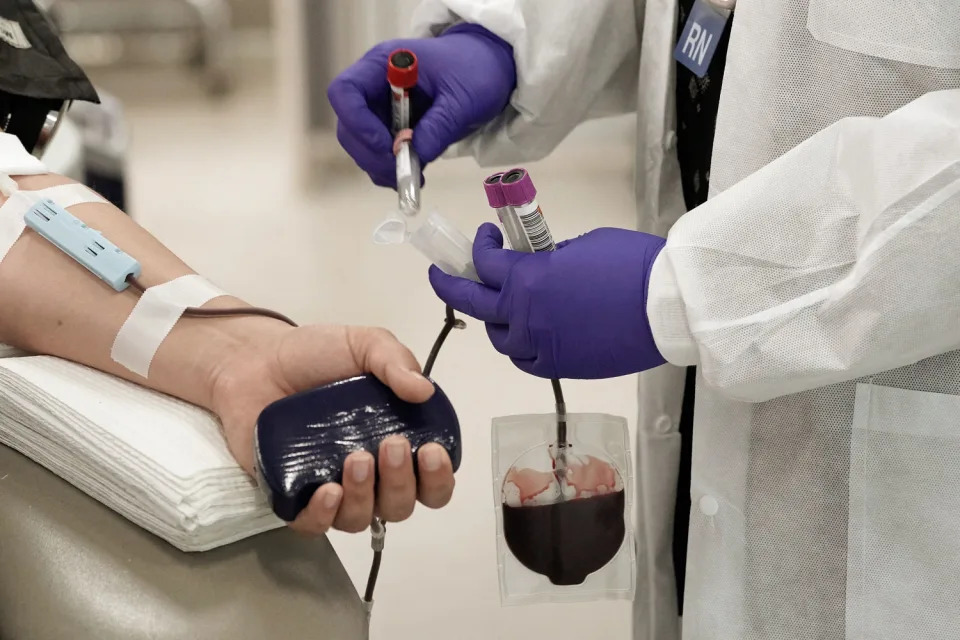
Image: Inside A Blood Drive At Chargers Stadium (Bing Guan / Bloomberg via Getty Images file)
However, some heterosexuals who aren’t in monogamous long-term relationships are newly ineligible to donate blood. (Aug. 7)
Click for full story
California store owner, mother of 9, fatally shot over a Pride flag displayed in her shop

Laura Ann Carleton. (via Mountain Provisions Cooperative)
The suspect made “several disparaging remarks” about the rainbow flag before shooting the store owner, Laura Ann Carleton, the San Bernardino Sheriff’s Department said. (Aug. 20)
Click for full story
After decades of declines, lesbian bars are having a renaissance

Angela Barnes and Renauda Riddle pose for a photo behind the bar. (Akilah Townsend for NBC News)
From Brooklyn to Oklahoma City, a dozen new venues owned by queer women have opened their doors since 2020. (Aug. 28)
Click for full story
How Zooey Zephyr, Montana’s first trans legislator, became a national celebrity

Rep. Zooey Zephyr walks out of Gild in downtown Missoula, Mont., on Aug. 9, 2023. (Rebecca Stumpf for NBC News)
Zephyr’s Republican colleagues silenced her in the state, but they inadvertently amplified her message across the country. (Sept. 3)
Click for full story
Book challenges reach historic highs, American Library Association reports

The wave of attempted book banning and restrictions continues to intensify, the American Library Association reported Friday. Numbers for 2022 already approach last year's totals, which were the highest in decades. (Rick Bowmer / AP file)
Most of the challenged titles were written by or about people of color or members of the LGBTQ community, the ALA found. (Sept. 20)
Click for full story
Transgender adults in red states fear for the next generation as political attacks accelerate

A side-by-side image of Ashley Swartz and Eli Rigatuso. (Madeline Cass for NBC News)
As conservative lawmakers and activists set their sights on transgender inclusion and health care, trans adults are fearful about what the future holds for their younger counterparts. (Oct. 7)
Click for full story
New House speaker’s views on LGBTQ issues come under fresh scrutiny

U.S. Speaker of the House Mike Johnson (R-LA) in Washington, DC. on Nov. 7, 2023. (Drew Angerer / Getty Images)
Rep. Mike Johnson, R-La., has called same-sex marriage a “dark harbinger of chaos” and suggested it could lead to people wedding their pets. (Oct. 26)
Click for full story
A year after Elon Musk bought Twitter, LGBTQ people say it has become toxic

Elon Musk, CEO of Twitter, during a conference in Paris on June 16, 2023. (Jeanne Accorsini / Sipa via AP Images file)
On Musk’s X, users are allowed to deadname and misgender transgender people and make money off of anti-LGBTQ content. (Oct. 27)
Click for full story
Meet the 13-year-old West Virginian suing to join her school’s track team

Becky Pepper-Jackson, 13, a transgender teen at the center of a legal battle over transgender participation in West Virginia sports and her mother Heather Jackson after a hearing in Richmond, Va. on Oct. 27, 2023. (Shuran Huang for NBC News)
Becky Pepper-Jackson’s case is one of two against restrictions on transgender students’ playing school sports that could end up before the Supreme Court. (Oct. 28)
Click for full story
Victims of the deadly druggings that terrorized NYC’s gay bars are haunted by unknowns

Julio Ramirez and John Umberger. (Ramirez family photo; Linda Clary)
One of the six defendants was sentenced to nine years in prison. Authorities say the yearslong crime ring victimized 16 people and led to two deaths. (Nov. 20)
Click for full story or all stories in this series
George Santos is expelled from the House

Activists hold a large inflatable balloon of Rep. George Santos as they advocate for his expulsion. (Paul Morigi / Getty Images)
Santos, R-N.Y., who made history in 2022 by becoming the first openly LGBTQ nonincumbent Republican elected to Congress, was expelled from the House of Representatives, making him just the sixth member of the House ever to be expelled and the first in more than 20 years. (Dec. 1)
Click for full story
A ‘renaissance of gay literature’ marks a turning point for publishing

The Ripped Bodice romance bookstore in Los Angeles. (Madeline Derujinsky)
Exclusive data and industry experts — including publishers, booksellers and BookTok influencers — shed light on the yearslong surge in LGBTQ fiction sales. (Dec. 9)
Click for full story
From drag bans to sports restrictions, 75 anti-LGBTQ bills have become law in 2023

Trans rights activists march past the state Capitol during a protest of anti-drag laws in Nashville, Tenn. (John Amis / AP Images for Human Rights Campaign file)
Restrictions on gender-affirming care for transgender youths were the most common, with 21 such laws passed this year. (Dec. 17)
Click for full story
Pope says priests can bless same-sex couples, a radical change in Vatican policy

Pope Francis appears at the balcony to deliver his Christmas blessing in 2022. (Andreas Solaro / AFP - Getty Images file)
The announcement about same-sex blessings triggered both healing and pain for LGBTQ Catholics, and it came just six weeks after Vatican officials said transgender people can be baptized in the Catholic Church. (Dec. 18)
\
Tommy Dorfman Accuses Delta Employee of 'Intentionally' Misgendering Her in Viral Video
Ryan Adamczeski
Thu, December 28, 2023

Tommy Dorfman Delta Airlines Intentional Misgendering Incident
Tommy Dorfman is speaking out after an incident over the holiday weekend where a Delta Airlines employee repeatedly misgendered her before threatening to have her kicked out of an airport.
Earlier this week, the 13 Reasons Why actor and transgender advocate posted a TikTok of an incident between herself and two Delta employees at LaGuardia Airport in New York City. She accused the employees of repeatedly and "intentionally" misgendering her, after one kept referring to her as "he" and using the wrong pronouns, despite being corrected.
— (@)
twitter.com
“You just misgendered me again,” Dorfman says at one point in the video.
“It wasn’t intentional, but if you want to take it personal, that’s also OK," the employee responded. "You’re being condescending, and if you want to continue, I’ll have Port Authority escort you out the building right this moment if you want to play that game with me. Would you like to continue three days before Christmas? I really don’t mind.”
Dorfman wrote in the video's caption that she "didn't realize it was condescending to flag a human rights violation after another employee misgendered me incessantly.” She deleted the TikTok after an onslaught of commenters, but it has since been re-uploaded by other accounts.
Delta said that it is “aware of the video and looking into the matter, including reaching out to our customer to understand more about what occurred," in a statement to Newsweek.
Dorfman has since addressed the incident through her Instagram story, where she urged people to always treat others with respect, and to educate themselves about pronouns. The actor then posted a link to pronouns.org, which she called an "excellent resource."
"Everyone deserves to be treated with respect, including transgender people," Dorfman wrote. "When we are mistreated, i.e. being misgendered repeatedly, trans people should be able to defend ourselves and advocate for our innate human dignity."
A Republican House member spoke in support of a Ugandan law that doles out a death penalty for 'aggravated homosexuality'
Madison Hall
Updated Thu, December 28, 2023
In May, Uganda enacted a law letting courts give the death penalty for "aggravated homosexuality."
The law's been heavily criticized by humanitarian organizations and even Republican Sen. Ted Cruz.
One GOP House member, though, traveled to the country in October to voice his support for the law.
A Republican member of the House of Representatives spoke in support of a Ugandan law that provides the death penalty for those convicted of "aggravated homosexuality."
The Young Turks uncovered earlier in December that Rep. Tim Walberg, who's represented Michigan in Congress since 2011, made the speech in October in Uganda at a national prayer breakfast with the country's president in attendance.
In his speech, Walberg, a former pastor, railed against "the World Health Organization, or the United Nations, or sadly some in our administration in America" that have been outspoken against a new Ugandan law from May criminalizing homosexuality.
The law not only allows for 20-year sentences for "promoting homosexuality," but also stipulates death for "serial offenders."
The representative also spoke at length about his disdain for the idea of transgender people existing at all.
"I've been told all throughout COVID and everything else, 'Follow the science,'" Walberg said. "But when they come to understanding that there's male and female and God created it, that science and to lie to our children, to groom our children, to think that they can determine whatever they want… That's not science."
He added that "Your esteemed president, his excellence President Musevini, needs a nation that stands with him and says, 'though the rest of the world is pushing back on you, though there are other major countries that are trying to get into you and ultimately change you: Stand firm. Stand firm.'"
Though Walberg supports Uganda's anti-LGBT law, one notable member of Congress, Sen. Ted Cruz of Texas, spoke out against it online after it was enacted.
Walberg's speaking arrangement in October wasn't the first time he's pushed back against LGBT rights. The representative was a cosponsor of a 2015 bill trying to amend the US Constitution to formally declare that marriages are only between men and women and allow states to not recognize same-sex marriages.
The bill was never brought to a floor vote. Months after it was introduced, the Supreme Court ruled that every state had to recognize and perform same-sex marriages in the landmark Obergefell v. Hodges case.
Less than a month later, Walberg cosponsored another piece of legislation, this time in an attempt to have the House formally declare its opposition to the high court's ruling. That bill was also never brought to the floor for a vote.
Alex Cooper
Thu, December 28, 2023

Michigan State Rep Tim Walberg
U.S. Rep. Tim Walberg, a Republican representing parts of Michigan, encouraged the Ugandan government to “stand firm” amid the international backlash against the country’s Anti-Homosexuality Act, which includes the death penalty in some cases, during a speech in Uganda last October. The act is also known as the “kill the gays” bill.
Walberg made the remarks at Uganda’s National Prayer Breakfast. The Republican co-chairs the event in the U.S. According to reporting by The Young Turks, the trip was paid for by the secretive conservative group The Family — which is also known as the Fellowship Foundation. Uganda’s President Yoweri Museveni sat in the audience. He signed the law back in May.
In video in the outlet’s reporting, Walberg is seen “listening to, endorsing and associating himself with the remarks of other speakers. Speakers called LGBTQ+ advocates ‘a force from the bottom of hell’ and urged government officials to adopt ‘Christocracy’ over democracy.”
TYT writes, “Walberg’s trip marks the first time a Family leader or any American lawmaker has publicly embraced the legislation.”
Related: Biden, Blinken, and More Condemn Uganda's Horrific Anti-Homosexuality Act
Though Walberg doesn’t mention the Anti-Homosexuality Act, he urges Uganda’s political leaders to not bow down to U.S. or international pressures.
“Though the rest of the world is pushing back on you,” Walberg said during his speech, “though there are other major countries that are trying to get into you and ultimately change you, stand firm. Stand firm.”
The lawmaker referenced Bible stories and verses throughout his speech, according to TYT.
“Worthless is the thought of the world,” he said to applause. “[W]orthless, for instance, is the thought of the World Bank, or the World Health Organization, or the United Nations, or, sadly, some in our administration in America who say, ‘You are wrong for standing for values that God created,’ for saying there are male and female and God created them.’”
Walberg added: “Whose side do we want to be on? God’s side. Not the World Bank, not the United States of America, necessarily, not the U.N. God’s side.”
The Ugandan president welcomed Walberg’s comments, saying that there were Americans who “think like us,” TYT reports.
The national prayer breakfast movement has been a massive project by The Family and has been protested against in the U.S. over The Family’s connections to anti-abortion and anti-LGBTQ+ movements around the world.
Uganda’s breakfast co-chair Member of Parliament David Bahati began championing a “kill the gays” bill more than a decade ago.
In his speech, Walberg told attendees to support the Ugandan president and his violent anti-LGBTQ+ policies: “He knows that he has a Parliament, and … even congressmen like me who will say, ‘We stand with you.’”
Related: Activists Link U.S. Nonprofit to Anti-LGBTQ+ Laws Across Africa
None at the event outright spoke about the legislation, TYT notes. However, given the circumstances and the allusions to international pressure, it’s not hard to make the connections.
“I want to thank the congressman from Michigan, because you have seen that we have got the Western people that we see here. I’m not the only one,” Museveni said. He added that Walberg’s support showed that there were others that backed them.
“There are others, also,” Museveni said, TYT reports, “who come to tell you about homosexuals, about abortion. You now know that there are other Americans, other Western people, who think like us.”
Related: World Bank Cuts Off Funds to Uganda Over Anti-LGBTQ+ Law
Before the new law, Uganda’s penal code already punished same-sex sexual relations with life imprisonment, according to Human Rights Watch. However, the new law created new crimes such as the vaguely worded “promotion of homosexuality” and introduced the death penalty for several acts considered as “aggravated homosexuality.” The new legislation also increased the prison sentence for attempted same-sex conduct to a decade.
The speech hasn’t been widely reported until now. The comments were first reported by the Take Care Tim blog and several other outlets.
During his speech, Walberg said, “I expect some pushback, but I’m not gonna give in to them.”
The Advocate has reached out to Walberg’s office for comment.









